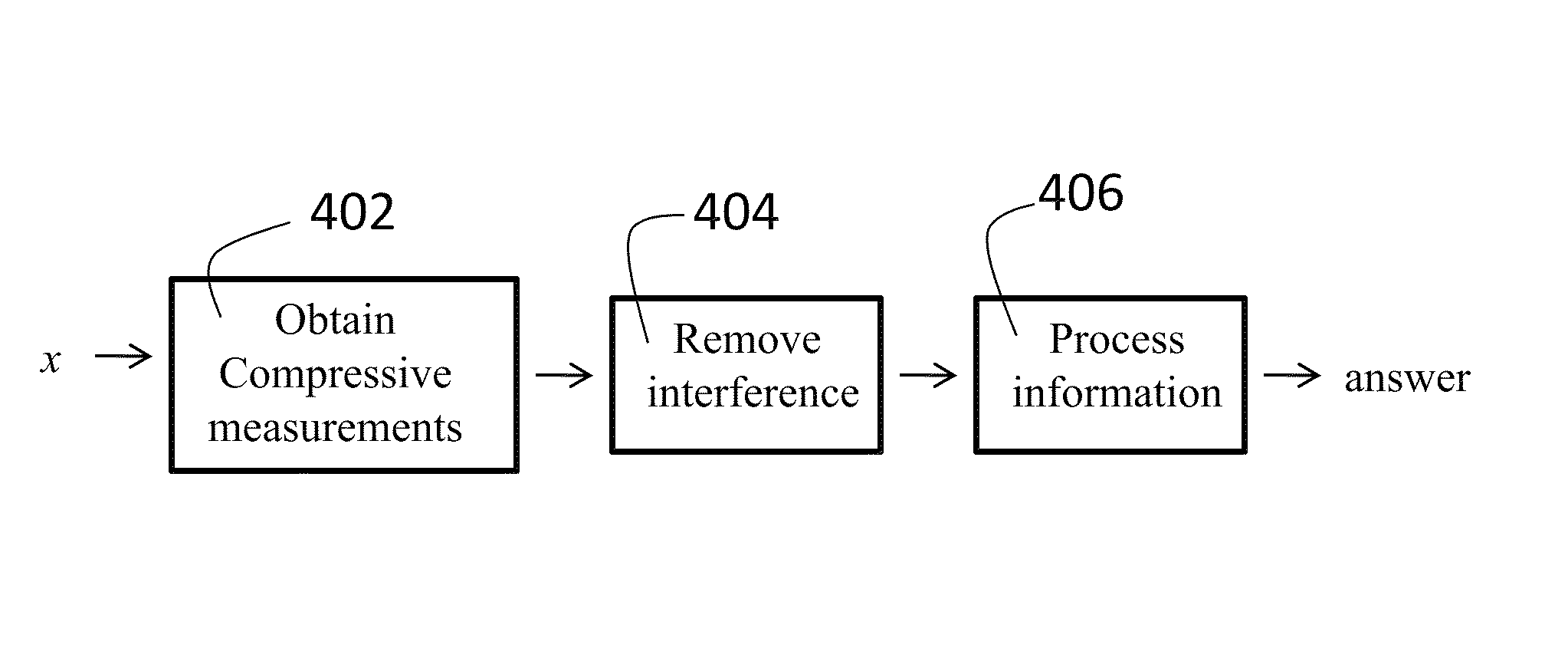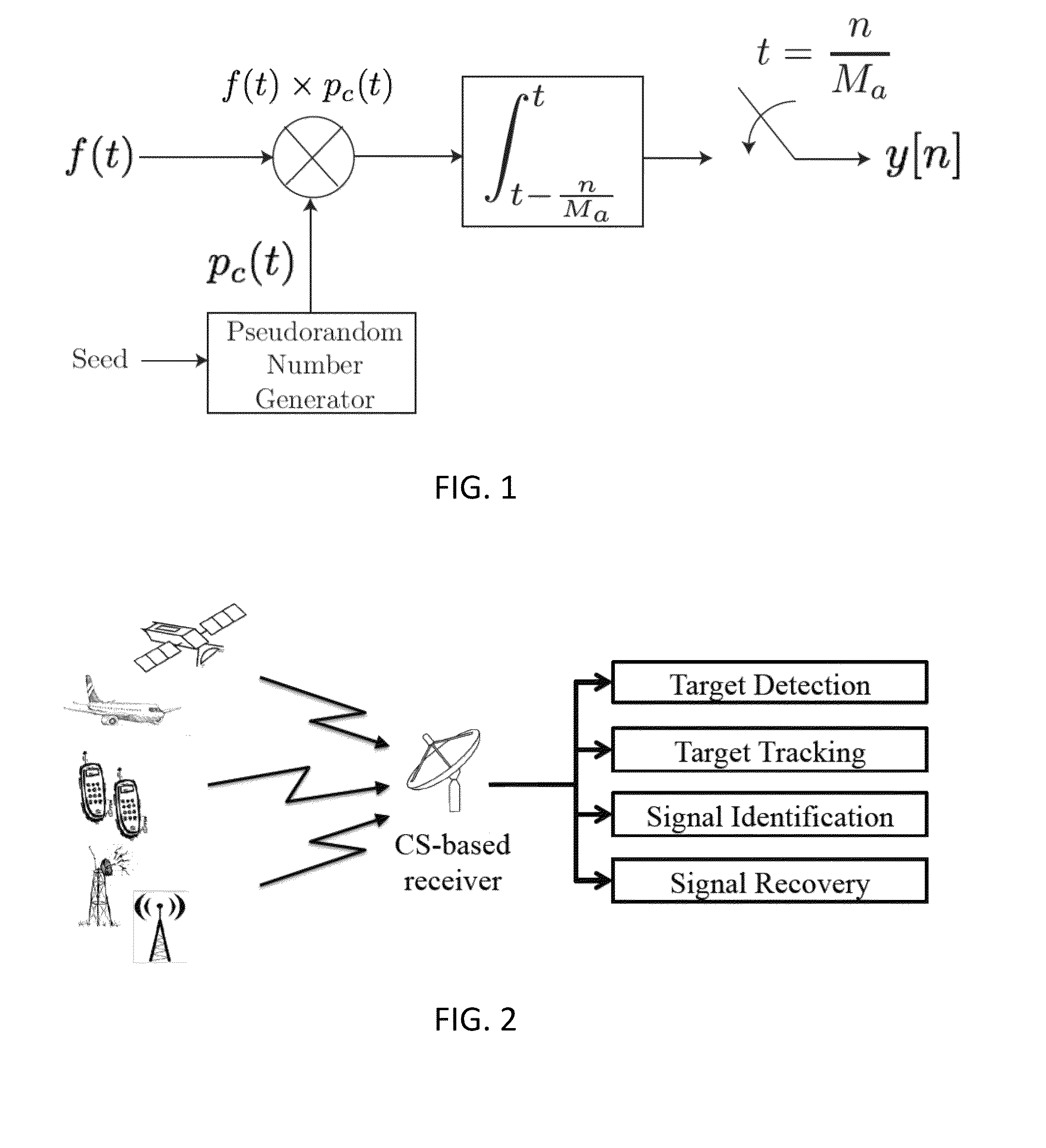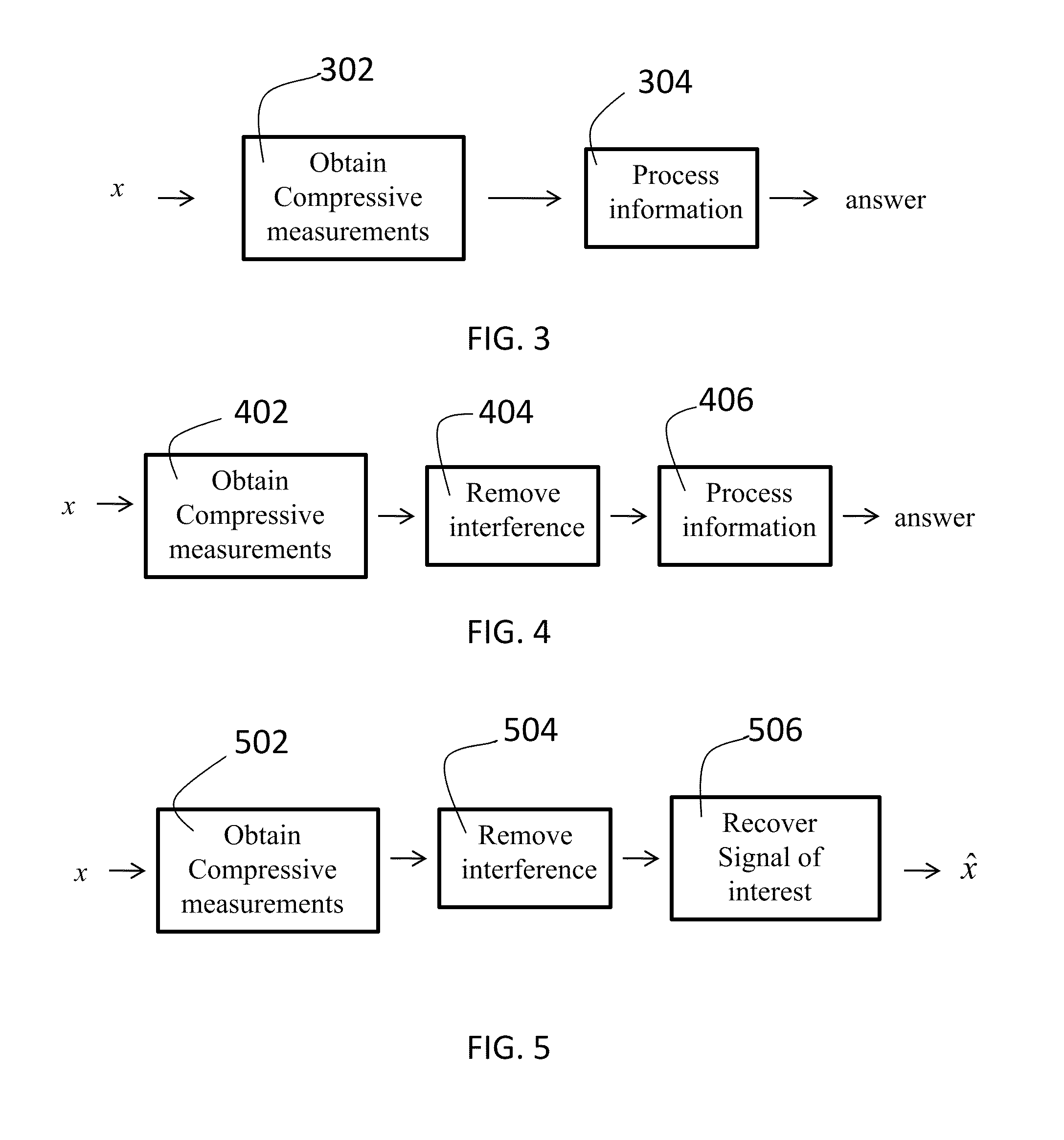Method and apparatus for compressive domain filtering and interference cancellation
a compression domain and interference cancellation technology, applied in the field of methods and apparatus for processing signals, can solve the problems of cs-based signal acquisition and processing being more susceptible to noise and interference, affecting the compression measurement acquired by these systems, etc., and achieves the effects of efficient capture and recovery, increased computation, and efficient acquisition
- Summary
- Abstract
- Description
- Claims
- Application Information
AI Technical Summary
Benefits of technology
Problems solved by technology
Method used
Image
Examples
Embodiment Construction
[0068]4.1 Compressive Domain Interference Cancellation
[0069]In many applications the aim is to acquire or monitor a class of structured, high-dimensional signals. Such cases are often amenable to CS-based acquisition. For example, consider the wide-band signal monitoring and processing station shown in FIG. 2 that receives signals from a variety of sources, including various television, radio, and cell-phone transmissions, radar signals, and satellite communication signals.
[0070]In many cases, the monitoring station (or a particular signal processing apparatus or method) is only interested in a subset of the signals present, and the other signals act as interference. A naïve way to proceed would be to recover all of the signal components using a standard CS algorithm (such as l1-minimization or a greedy algorithm), separate the components due to each of the sources, and then process each recovered component separately. However, this approach is inherently wasteful and is often extre...
PUM
 Login to View More
Login to View More Abstract
Description
Claims
Application Information
 Login to View More
Login to View More - R&D
- Intellectual Property
- Life Sciences
- Materials
- Tech Scout
- Unparalleled Data Quality
- Higher Quality Content
- 60% Fewer Hallucinations
Browse by: Latest US Patents, China's latest patents, Technical Efficacy Thesaurus, Application Domain, Technology Topic, Popular Technical Reports.
© 2025 PatSnap. All rights reserved.Legal|Privacy policy|Modern Slavery Act Transparency Statement|Sitemap|About US| Contact US: help@patsnap.com



